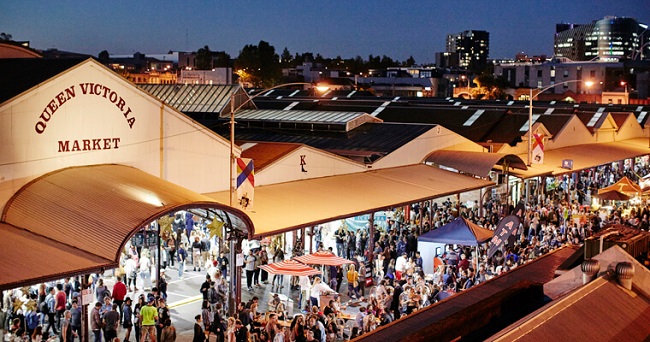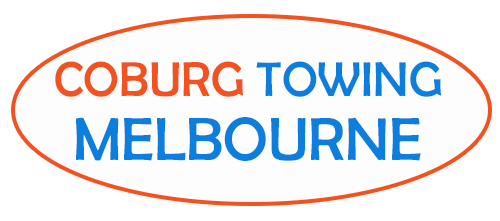Queen Victoria Market

Queen Victoria Market (also called by its colloquial name of Vic Market or Queen Vic) is an important tourist attraction located in the Central Business District (CBD) located in Melbourne, Victoria, Australia. It covers more than seven acres (17 acres) it is the biggest open-air marketplace in Australia’s Southern Hemisphere.
It was built in stages in the 1860s before being officially inaugurated in 1878 The Queen Victoria Market is the only major market that remains within the CBD and, along with Prahran Market, and South Melbourne Market, the one of Melbourne’s Victorian market that is still in operation. It is in both the Victorian Heritage Register and the National Heritage List, and is one of Melbourne’s most important tourist destinations, with an estimated 10 million visitors per year.
Markets earlier in Melbourne
The Western Market was the first official market for vegetables and fruits that was established in 1841, just six decades after its creation. It eventually grew to cover an entire block bordered by Market, Collins and William streets that lie in the heart of the city’s business district. In the expansion of Melbourne toward the east resulted in the development of the Eastern Market in the late 1840s. The market quickly took over that of the Western Market in its popularity.
Old Melbourne Cemetery
Melbourne the founder John Batman was among the early colonists who were buried at the present site of the market.
It was in the Queen Victoria Market The Queen Victoria Market was constructed and expanded on the site in an Old Melbourne Cemetery, which was the first British burial ground in Melbourne. Also called Burial Hill The majority of the early settlers in Melbourne were burial in the cemetery, among them was founding of the city, John Batman. The first person to be buried was a baby named William Goodman who was laid to rest on May 13, 1836. In July 1836 an adult burial took place and was that of the pioneer Charles Franks, who was murdered at the hands of Aboriginal people. The clan that was blamed for Franks murder was soon after being destroyed during a brutal operation.
The cemetery was closed to burials in 1854 , but certain legal and a few illegal burials continued to be held until 1917. By 1920 it was believed that 10,000 graves were buried at the cemetery, although the exact figure is not known because the cemetery records were destroyed by fire in 1864.
The development of a market area
After the cemetery’s partial closing there were a few smaller retail and wholesale markets were set up within the vicinity of the cemetery in the latter half of 1850 to supply Melbourne’s fast-growing population. There was a Lower Market. Lower Market (Deli Hall, Meat and Fish Hall and the the H and I sheds) was initially reserved in 1857 to serve as the purpose of a market for vegetables and fruits due to the overcrowding of the Eastern Market. The location was in dispute because of its proximity to the cemetery, and was not popular with gardeners in the market who were hesitant to utilize the area. The result was that it was used as a hay and livestock marketplace (the Meat Market Reserve) until 1867, when a large brick structure (now now the Meat and Fish Hall) is built at the intersection of Elizabeth and Victoria streets.
In 1876 in 1876, the Victorian Government adopted an Act that officially proclaimed the Old Melbourne Cemetery site as the land to be reserved and transformed into markets. The following year, the area of the cemetery at the intersection of Queen and Victoria streets, where the non-consecrated funerals for Aboriginal people as well as executed criminals were buried was the first site to be constructed on. Prior to construction 28 skeletons were exchumed and then reinterred in Melbourne General Cemetery. Melbourne General Cemetery, including the remains that of three Aboriginal men who were executed in the 1840s.
Queen Victoria Market: Official Opening Queen Victoria Market
The Queen Victoria Market officially opened in March 1878. it quickly expanded to wholesale as well as retail fruit and vegetable trading, which led to the building of G H, I, as well as J sheds. Shops were constructed on Elizabeth Street in 1880, and in 1884, the famous Meat and Fish Hall facade was built.
In the year 1898, an average 300 carts filled with fresh produce and fresh vegetables from the markets in the south-east of the city landed each week twice during summer months to be sold at the market.
Queen Victoria Market is near the Coburg Towing Melbourne.
We offer Towing Melbourne, Emergency Towing , 24/7 Towing, Roadside Assistance, Motorcycle Towing and other towing services in Melbourne.
Please check below Google Maps.
